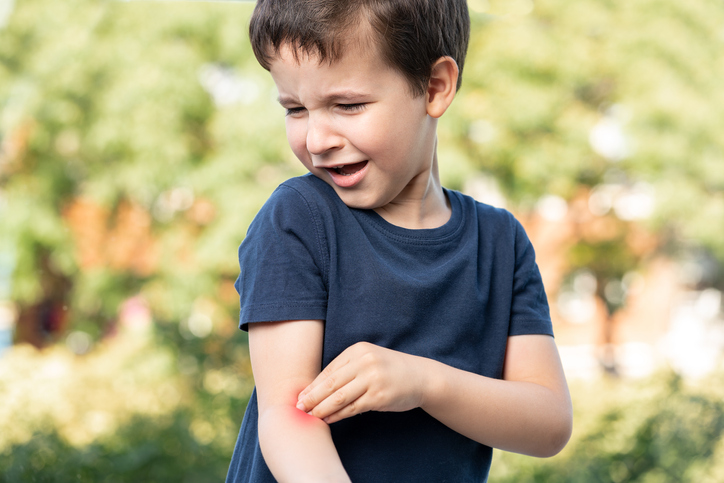Cookies & Tracking Technologies Notification
This website uses cookies and tracking technologies to optimize your experience. Learn More
This website uses cookies and tracking technologies to optimize your experience. Learn More

Eczema is also known as atopic dermatitis. It is usually due to a genetic sensitive skin type that can be irritated easily by allergens in the environment. It manifests in a condition in which the skin is red, irritated, and dry. The reoccurring rash can get worse when children scratch or rub due to the itching sensation they experience.
Eczema often is associated with allergies to food items or environmental or external causes – like dust, pollen, molds, and pet dander. Children with eczema can develop asthma symptoms later on in life. Be aware of other family members that might also have eczema or asthma as it is genetic and can be passed on from generation to generation. This sensitive skin can extend into teenage years and even into adulthood.
Good news is a child’s eczema can gradually get better or at least more manageable with age. Age ranges with this varies per case; however, it is estimated that 2/3 of children do grow out of eczema and may just have dry skin later on in life. It is more rare for these children to have severe eczema in adult life.
Whether your child needs medical treatment for a skin rash or a diagnosis for strep throat, our pediatricians can help them in a timely manner and during flexible evening hours. Reserve a Spot Now!
Parents can teach their children good skin habits to prevent their skin from becoming more dry and sensitive. Ways to do this include: Avoiding anything that triggers the eczema, avoiding hot showers (pro-tip: try a cool compresses to ease the skin because warmer temperatures can lead to flare-ups), gently patting the child’s skin dry after a bath instead of vigorously rubbing with a towel, being sure to moisturize thoroughly with the thickest lotion/ointment (Vaseline or Eucerin products are great), using non-scented and sensitive soaps, and avoid scratching the skin as much as possible.
Discuss with your doctor at Pediatrix Urgent Care other ways to protect your child’s skin and other ways to keep your little one comfy.